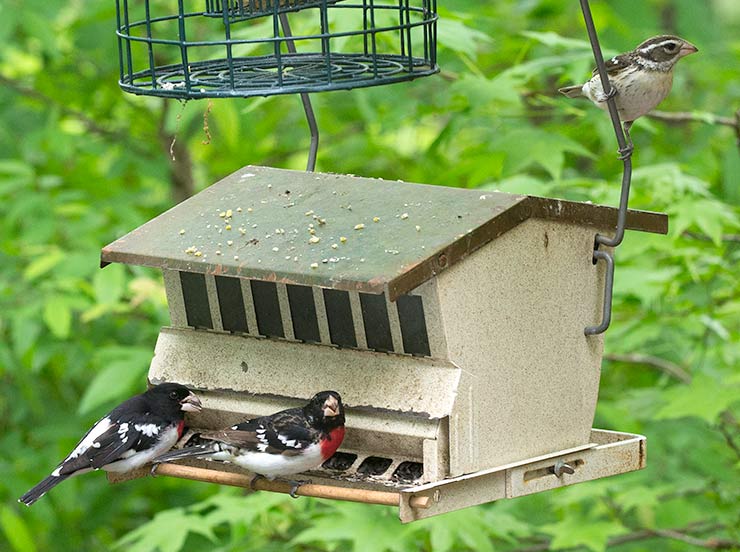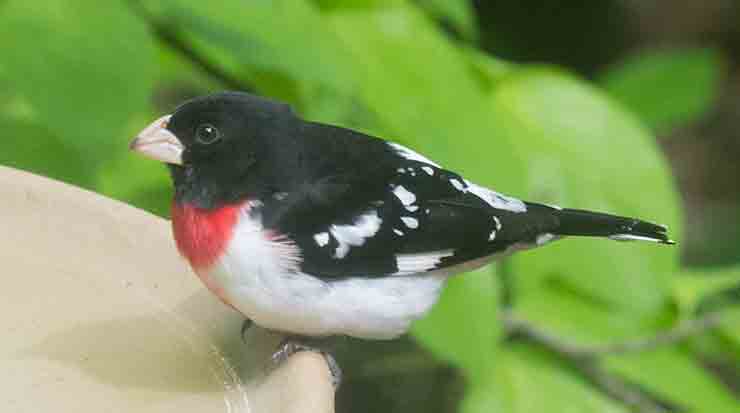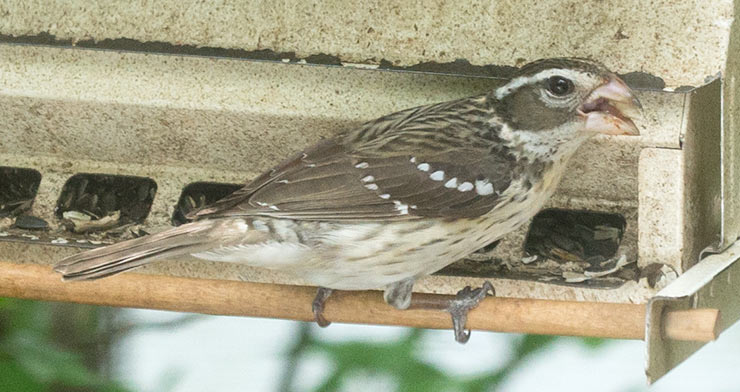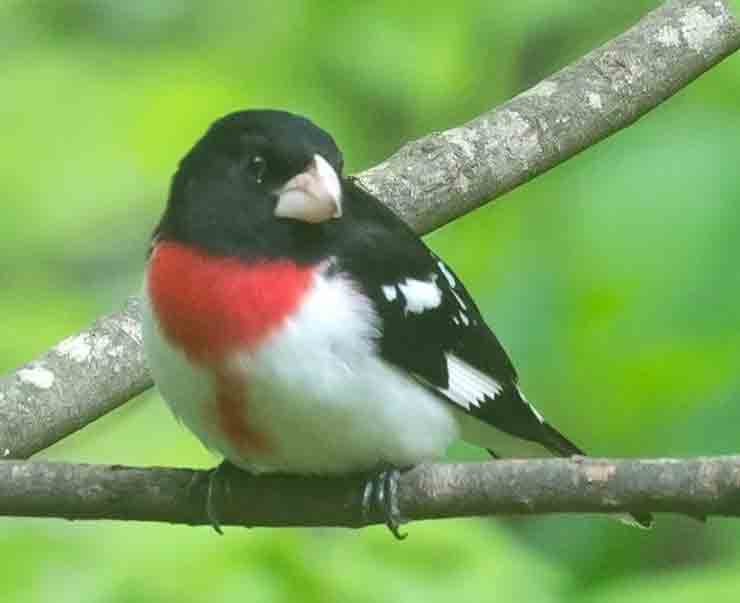For the last week, we have frequently had Rose-breasted Grosbeaks (Pheucticus ludovicianus) at our feeders. Apparently this has been a good year for them; at a recent meeting of the local Audubon Society, fully half the members in attendance reported seeing them in their yard. Grosbeak means “large beak” and it is easy to see how they deserve this name. They shell sunflower seeds very adeptly with this beak.
Rose-breasted Grosbeaks are just passing through our area on their annual migration north. They spend their winters in Central America or the northern part of South America. They breed in the Northern U.S., Southern Canada. However, their breeding range extends down the Appalachians as far south as Northern Georgia.
The generic name of the Rose-breasted Grosbeak (Pheucticus) may be from the Greek “phycticus”, which means “painted with cosmetics”. This seem appropriate for the brightly-colored male. The specific name “ludovicianus” means “from Louisiana”. Other organisms which share this species name are Cynomys ludovicianus, the Black-tailed Prairie Dog, Lanius ludovicianus, the Loggerhead Shrike, Thryothorus ludovicianus, the Carolina Wren, and Cambarus ludovicianus, a Crayfish. When a new organism is discovered, the person who finds it gets to give it a scientific name. All the organisms with the species name ludovicianus were probably first described from Louisiana (although that does not mean that Louisiana is the only place they are found).
The female is quite a different looking bird. She looks like a giant female Purple Finch.
In the photograph above, the red bib is seen to extend down the center of the male bird’s breast.




